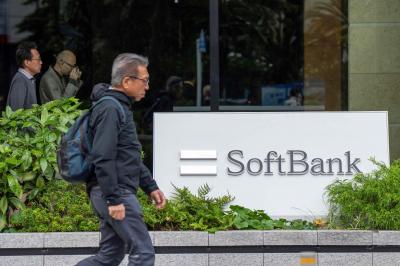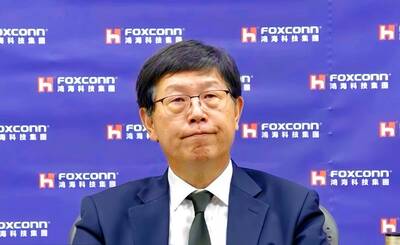Migrant worker Yue Yaowei has lived in Beijing for six years, but is not recognized as a resident of the Chinese capital and thus cannot get health insurance, buy a car or purchase a house.
“I am under big pressure here,” Yue, 24, said at a duck restaurant in central Beijing where he earns about US$400 a month as the head waiter.
“I don’t have much savings after buying clothes, gifts for my family and going out with friends,” he said.

Photo: AFP
Yue is one of tens of millions of migrant workers around the country tied to a residency registration in their home town which largely prevents them from accessing a range of public services once they move to other cities.
The so-called hukou system — which the government has vowed to reform — was introduced in the 1950s to curb potentially destabilizing population flows from the countryside to the cities, in a nation that was recovering from civil war.
It has fueled resentment among migrants, as has widespread discrimination against the army of low-paid workers, sometimes spilling over into violent unrest.
Unlike their parents, young migrant workers — the second generation — are more aware of their rights, and are increasingly frustrated with the treatment they receive in cities where they are often considered second-class citizens.
Last month, three days of riots in southern Guangdong Province broke out after rumors spread that police had beaten a street hawker to death and manhandled his pregnant wife.
The protests in the manufacturing hub were the latest in a line of outbursts in the country, which analysts say highlight the frustration felt by migrants over what they see as unfair treatment and anger at the widening wealth gap.
“Very often these disputes that flare up are simply the result of long-simmering discontent,” said Geoffrey Crothall of the Hong Kong-based China Labour Bulletin, a workers’ rights organization.
“There’s a sense of social injustice that young migrant workers see every day and that is related to their personal and working conditions,” he said.
While Yue has no plans to take to the streets over his struggle to make ends meet in Beijing, he sympathizes with the gripes of protesting workers in southern China.
Local residents “think outsiders squeeze their living environment and place competition pressures on them for jobs. Their life could be easier without us,” Yue said.
However, he said the young workers “can’t go back to their home town because they have left home for so long and have nothing there.”
China’s economic boom started three decades ago when foreign-backed factories sprang up along the country’s southern and eastern seaboards, attracting hundreds of millions of rural migrants seeking work.
The first generation worked long hours in often poor conditions but were able to send money back to their families, helping them build new homes and raise living standards in their rural villages.
Raised in those boom times, China’s new generation of workers are less willing to accept difficult conditions for low pay and are increasingly assertive about exercising their own economic clout as laborers. Many have no plan to go home.
“Society has become richer so they want a bigger share of the pie. People’s expectations have gone up,” said Anita Chan, a research professor at the University of Technology in Sydney.
The younger generation of migrant workers are also more educated and “aware of the finer points of the law,” she said.
For Tuo Qiaoqiao, a waitress at an Italian restaurant in Beijing, leaving her village in the northern province of Shaanxi to live in the Chinese capital was a chance to have “some adventures,” meet foreigners and make money.
“People of the post-1980 and post-1990 generations believe in living for fun. We just make everything up as we go along,” Tuo, 20, said as she flicked through a fashion magazine. “I will not go back to the countryside — the countryside suits old people, but not young people.”
Crothall said a common view among urban residents was that young migrant workers were criminals — and many indeed are, according to official figures.
Migrant workers born after 1980 — a group consisting of nearly 100 million people — committed a third of all crimes nationwide last year, according to the Chinese Academy of Social Sciences (CASS).
CASS linked the crime wave to discrimination the workers often encounter in cities, dismissing the commonly-held view that it was due to poor education, a bad home environment in childhood, or poverty.
It cited “exclusion, job and education difficulties, unfair economic and political treatment, inadequate social security and cultural clashes” as the main reasons behind the crime wave.
Despite the challenges Yue faces living in Beijing — he shares a bedroom with three colleagues and works long hours — he says he has no immediate plans to return to his home in eastern Shandong Province.
First, he wants to open his own Chinese restaurant.
“I’m not going home without realizing my dreams,” he said. “I just want to earn enough money so that I don’t have to think too much and just buy whatever I like.”

Japanese technology giant Softbank Group Corp said Tuesday it has sold its stake in Nvidia Corp, raising US$5.8 billion to pour into other investments. It also reported its profit nearly tripled in the first half of this fiscal year from a year earlier. Tokyo-based Softbank said it sold the stake in Silicon Vally-based Nvidia last month, a move that reflects its shift in focus to OpenAI, owner of the artificial intelligence (AI) chatbot ChatGPT. Softbank reported its profit in the April-to-September period soared to about 2.5 trillion yen (about US$13 billion). Its sales for the six month period rose 7.7 percent year-on-year

CRESTING WAVE: Companies are still buying in, but the shivers in the market could be the first signs that the AI wave has peaked and the collapse is upon the world Taiwan Semiconductor Manufacturing Co (TSMC, 台積電) yesterday reported a new monthly record of NT$367.47 billion (US$11.85 billion) in consolidated sales for last month thanks to global demand for artificial intelligence (AI) applications. Last month’s figure represented 16.9 percent annual growth, the slowest pace since February last year. On a monthly basis, sales rose 11 percent. Cumulative sales in the first 10 months of the year grew 33.8 percent year-on-year to NT$3.13 trillion, a record for the same period in the company’s history. However, the slowing growth in monthly sales last month highlights uncertainty over the sustainability of the AI boom even as

AI BOOST: Next year, the cloud and networking product business is expected to remain a key revenue pillar for the company, Hon Hai chairman Young Liu said Manufacturing giant Hon Hai Precision Industry Co (鴻海精密) yesterday posted its best third-quarter profit in the company’s history, backed by strong demand for artificial intelligence (AI) servers. Net profit expanded 17 percent annually to NT$57.67 billion (US$1.86 billion) from NT$44.36 billion, the company said. On a quarterly basis, net profit soared 30 percent from NT$44.36 billion, it said. Hon Hai, which is Apple Inc’s primary iPhone assembler and makes servers powered by Nvidia Corp’s AI accelerators, said earnings per share expanded to NT$4.15 from NT$3.55 a year earlier and NT$3.19 in the second quarter. Gross margin improved to 6.35 percent,

FAULTs BELOW: Asia is particularly susceptible to anything unfortunate happening to the AI industry, with tech companies hugely responsible for its market strength The sudden slump in Asia’s technology shares last week has jolted investors, serving as a stark reminder that the world-beating rally in artificial intelligence (AI) and semiconductor stocks might be nearing a short-term crest. The region’s sharpest decline since April — triggered by a tech-led sell-off on Wall Street — has refocused attention on cracks beneath the surface: the rally’s narrow breadth, heavy reliance on retail traders, and growing uncertainty around the timing of US Federal Reserve interest-rate cuts. Last week’s “sell-off is a reminder that Asia’s market structure is just more vulnerable,” Saxo Markets chief investment strategist Charu Chanana said in